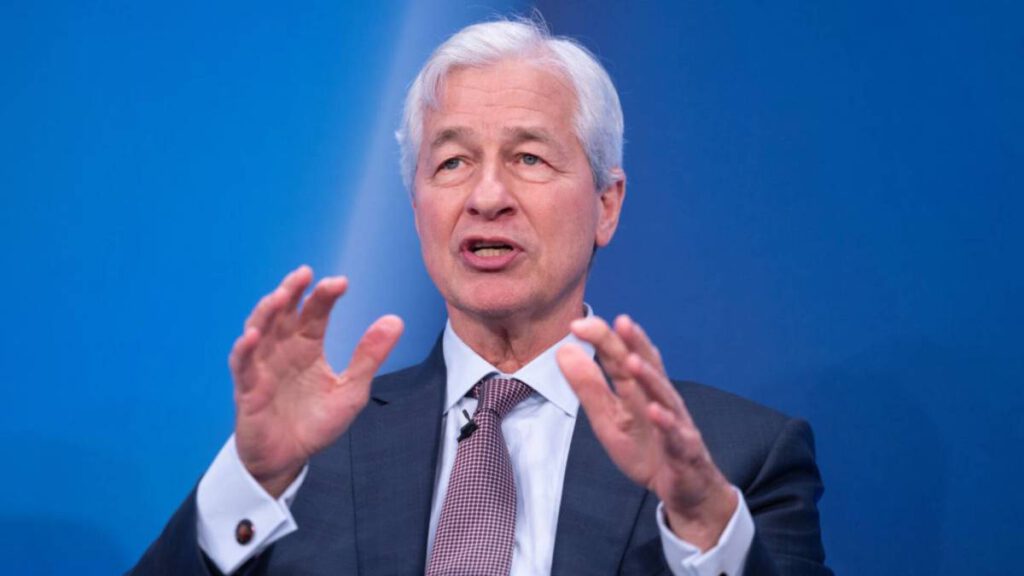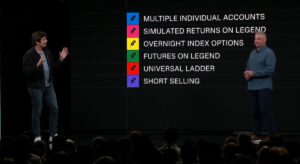JPMorgan CEO Jamie Dimon is giving an updated U.S. economic forecast after a gobsmacking report on jobs showed more troubling trends in the labor market.
The Bureau of Labor Statistics released its annual quarterly preliminary revision of job growth Sept. 9 that said:
- The nation’s economy added 911,000 fewer jobs in the 12 months ending in March.
- The revised job numbers show a significantly weaker labor market than earlier reports
- The report marks the largest preliminary revision on record going back to 2000 by total numbers of jobs lost.
- The revision represents the largest by the BLS since 2009 during the financial crisis when measured by total jobs lost.
BLS jobs revision “just confirms what we already thought,” Dimon said on CNBC.
Image source: Ratcliffe/Bloomberg via Getty Images
Q1 jobs annual revision shows massive loss
The BLS March 2025 Preliminary Benchmark Revisions revealed:
- Job growth from April 2024 to March 2025 was revised down to 911,000.
- Monthly payrolls slumped to 70,000, less than half the initial 147,000 reported.
- Leisure and Hospitality led all industries, dropping 176,000 jobs.
- Professional and Business Services lost 158,000.
- Retail Trade lost 126,200.
- Wholesale Trade dropped 110,000.
- The final revision will come in February 2026.
Beleaguered BLS sparks White House ire
The latest jobs report comes as the Labor Department is under heavy fire from President Donald Trump and its allies for needing updated data collection methods and unsubstantiated claims of lingering political weaponization from the Biden Administration.
Related: Main Street bracing for fewer jobs and higher inflation: Fed survey
Trump last month fired the then-BLS director after a weak jobs report for July and downward revisions for June and May and has since installed a temporary successor.
The August jobs report earlier this month showed continued weakness in the job market but the Trump Administration has made promises of a robust economy coming in mid-to-late 2026 fueled by robust fiscal policy linked to the nation’s highest tariffs in nearly 100 years.
Federal Reserve faces rate-cut decision
The president responded to the revised Q1 payroll numbers, which included the first months of his administration, by amping up criticism on his social media account of the Federal Reserve and its Chair Jerome Powell for failing to cut interest rates.
Related: Secretary Bessent has curt response to inflation worry
Among other considerations:
- Trump’s been demanding a three-percentage-point cut to the Federal Funds Rate, currently at 4.25% to 4.50%.
- The Federal Open Market Committee last cut the funds rate in December 2024.
- The FOMC meets Sept. 17.
- Fed Governor Christopher Waller is one of two FOMC members to dissent at the July meeting’s decision to hold rates steady.
- Waller and Fed Governor Michelle Bowman have been urging multiple rate cuts this year due to increasing evidence of weakness in the job market.
- The widely watched CME Group FedWatch Tool estimates a 91.7% chance of a 0.25-percentage-point rate cut in September and an 8.3% chance of a half-point cut.
Fed must balance jobs, inflation and interest rates
The Federal Reserve has a dual mandate from Congress requiring the independent central bank to maintain price stability and full employment.
It’s a tricky balance that must take into account:
- Warming inflation numbers, including the Fed’s preferred Personal Consumption Expenditure measure, are complicating the FOMC decision.
- The next Consumer Price Index release is Sept. 11.
- The FOMC had established a “wait-and-see” approach to cutting the funds rate depending on whether tariff inflation is transitory or lingering.
Dimon weighs in on state of U.S. economy
The Fed will “probably” reduce the benchmark Federal Funds Rate next week, Dimon said, but added that the move might not “be consequential to the economy.”
“There’s a lot of different factors in the economy right now,” Dimon said. “We just have to wait and see.”
He noted that “government data is important…our own data is important,’’ but even with all that information it is “hard” to make a definitive economic forecast.
“I think the economy is weakening,” Dimon said. “Whether it’s on the way to recession or just weakening, I don’t know.”
Related: Mortgage rates react as bets rise on Fed interest rate cut




